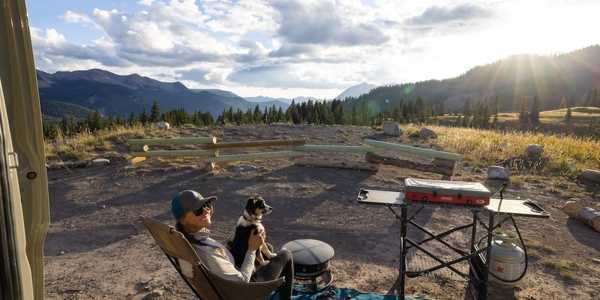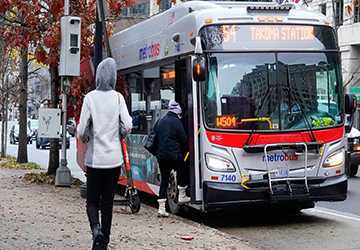The Rise of Slow Travel and Its Benefits
Why rush a trip when you can enjoy every moment? Slow travel invites you to experience your destination deeply and meaningfully. This trend emphasizes taking your time and offers benefits such as increased relaxation and promoting sustainable tourism, enriching every trip. In this article, let's explore the concept of slow travel and its myriad benefits.
Why rush a trip when you can enjoy every moment? Slow travel invites you to experience your destination deeply and meaningfully. This trend emphasizes taking your time and offers benefits such as increased relaxation and promoting sustainable tourism, enriching every trip. In this article, let's explore the concept of slow travel and its myriad benefits.
Understanding Slow Travel
The travel concept known as "slow travel" prioritizes quality over quantity. Rather than focusing on visiting as many tourist attractions as possible, slow travel encourages tourists to spend more time in fewer places. The rise of slow travel should create more meaningful and engaging travel experiences by encouraging a closer connection with a destination and its people.
Differences Between Slow Travel and Traditional Tourism

Slow travel and traditional tourism differ significantly in their approach and goals, as described below:
• Pace
Traditional tourism is often characterized by a fast pace, with tourists moving quickly from one attraction to the next to maximize the experience. In contrast, slow travel emphasizes a leisurely pace, giving travelers more time to explore and enjoy each destination fully.
• Experience
Traditional travel often involves visiting familiar places and checking things off a list. Slow travel, on the other hand, strongly emphasises activities that immerse you in your surroundings, such as: B. Meeting local people and learning about their customs and traditions.
• Effects
Traditional tourism can sometimes negatively impact a destination due to the high number of visitors and their short stays. Slow travel minimizes these effects by spreading out visits and spending more time in each location, which helps reduce environmental and cultural impacts.
Examples of Slow Travel Activities
Slow travel includes various activities designed to strengthen your connection with the destination. The most popular are listed below.
• Immerse Yourself in Local Culture
Engaging in local customs and traditions is an important aspect of slow travel. This might include attending a local festival, taking a cooking class to learn how to prepare traditional dishes, or participating in a cultural workshop. These activities provide insight into the local way of life and leave lasting memories.
• Explore At a Leisurely Pace
Slow travelers often explore their surroundings on foot or by bike, which allows for a more intimate and relaxed experience. Hiking, bike rentals, and walks through local nature reserves offer opportunities to see and appreciate the environment and architecture more closely.
• Support Local Businesses
By visiting local markets, cafes, and shops, slow travelers contribute to the local economy and support small businesses. This not only improves the travel experience but also helps preserve local crafts and traditions.
• Learn the Local Language
Knowing a basic local language can improve interactions with locals and deepen your understanding of the culture. Slow travelers often try to learn common phrases and greetings, which can lead to more meaningful connections and interactions.
Benefits of Slow Travel
There are many benefits to slow travel. Let's break these down in detail.
1. Cultural Immersion
• Deeper Connections with Local Communities
Slow travel fosters real connections between tourists and locals. Travelers can stay in a place longer, attend local events, chat with locals, and learn more about the area's way of life. This long-term engagement allows for deeper exchanges and a more comprehensive cultural experience than the superficial engagement typically achieved on shorter trips.
• Learn about Local Traditions, Cuisine, and Lifestyle
Simply getting lost in a destination's culture is more than just visiting its monuments. It's about discovering customs unique to the area, tasting local cuisine, and learning about daily life. Travelers can better understand local customs and culinary traditions by attending events such as festivals or cooking classes. This in-person experience paints a more complete picture of how locals live.
2. Environmental Sustainability
• Reduced Carbon Footprint by Traveling Less
Slow travel helps minimize environmental impact by reducing the number of flights and long-distance trips. Spending more time at each destination means fewer trips and less reliance on emission-intensive transportation options. Additionally, using buses, trains, or bicycles instead of renting a car or taxi can reduce CO2 emissions. This approach is in line with sustainable tourism principles, which aim to reduce travel's carbon footprint.
• Supporting Local Economies and Sustainable Practices
Travelers who adopt a slow travel approach often support the local economy by shopping at markets, eating at local restaurants, and using local services. This support helps sustain small businesses and promotes environmentally friendly practices. For example, choosing eco-friendly accommodations or participating in conservation projects can help you protect natural and cultural resources.
3. Personal Well-Being

• Lower Stress Levels Compared to Hectic Travel
The slow pace of travel reduces the stress often associated with tight schedules and constant movement. Travelers can relax, explore at their own pace, and enjoy their surroundings without having to check off lists of attractions. This more relaxed approach contributes to a more enjoyable, stress-free experience.
• Improved Mental Health Through Relaxation and Mindfulness
Taking time to pamper yourself at your destination can promote mindfulness and relaxation. Activities such as leisurely walks, meditation, and time spent in nature can improve mental health and lead to feelings of well-being. Research shows that time spent in nature and relaxing activities can improve mood and cognitive function.
• Opportunities For Personal Growth and Reflection
Slow travel provides ample opportunities for self-discovery and personal development. Travellers can gain new perspectives and insights by stepping out of their comfort zone and being exposed to new cultures and environments. Reflecting on these experiences often leads to greater confidence and personal development.
4. Economic Benefits
• Supporting Local Businesses and Artisans
Slow travelers often spend their money at local businesses, such as family-run restaurants, markets, and craft shops. This financial support helps sustain small businesses and preserve traditional crafts and trades. It also ensures that tourism dollars go directly to the community rather than to large international chains.
• Economic Impact on Small Communities
By staying longer and spending more in small towns or rural areas, slow travelers contribute to the local economy. Your spending supports local jobs, infrastructure, and services and helps keep small communities vibrant. This is especially important in areas where tourism is a significant economic driver.
Conclusion
At its core, slow travel encourages you to experience the world consciously and mindfully. One of the main benefits of slow travel is that it can enrich your vacation while promoting sustainable local businesses and the environment. With this strategy, you can make any trip a meaningful and memorable experience.





